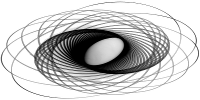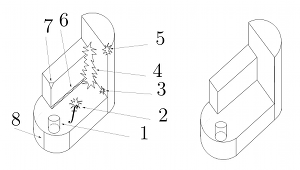C. H. Gao, F. C. Langbein, A. D. Marshall, R. R. Martin. Local Topological Beautification of Reverse Engineered Models. Computer-Aided Design, 36(13):1337-1355, 2004. [DOI:10.1016/j.cad.2004.02.004] [PDF]
Boundary representation models reconstructed from 3D range data suffer from various inaccuracies caused by noise in the data and by numerical errors in the model building software. The quality of such models can be improved in a beautification step, where geometric regularities need to be detected and imposed on the model, and defects requiring topological change need to be corrected. This paper considers changes to the topology such as the removal of short edges, small faces and sliver faces, filling of holes in the surface of the model (arising due to missing data), adjusting pinched faces, etc. A practical algorithm for detecting and correcting such problems is presented. Analysis of the algorithm and experimental results show that the algorithm is able to quickly provide the desired changes. Most of the time required for topological beautification is spent on adjusting the geometry to agree with the new topology.
![]() This work is licensed under a Creative Commons Attribution-NonCommercial-ShareAlike 4.0 International License.
This work is licensed under a Creative Commons Attribution-NonCommercial-ShareAlike 4.0 International License.

